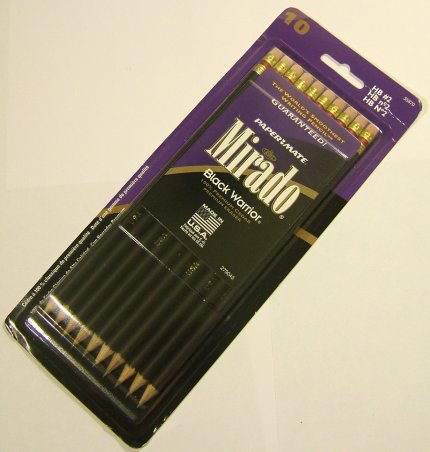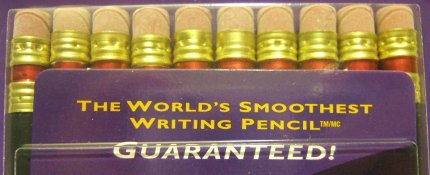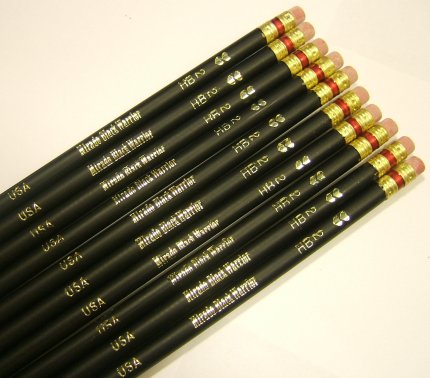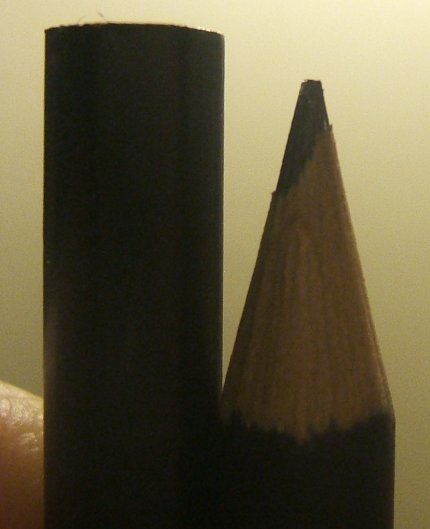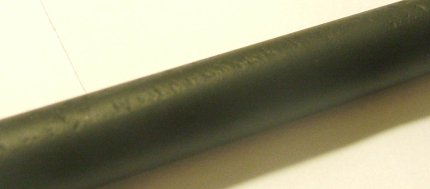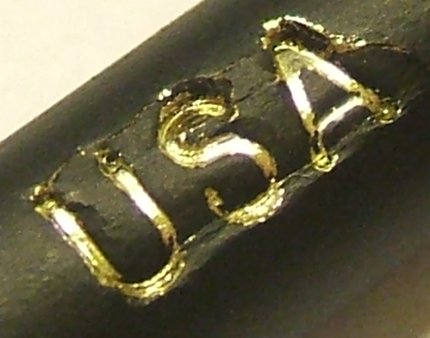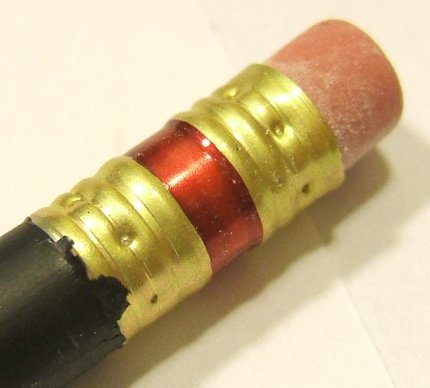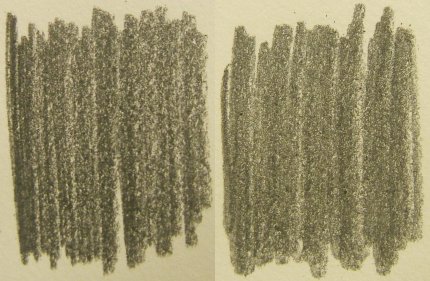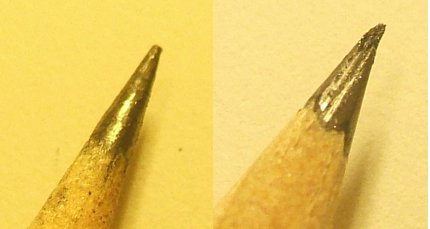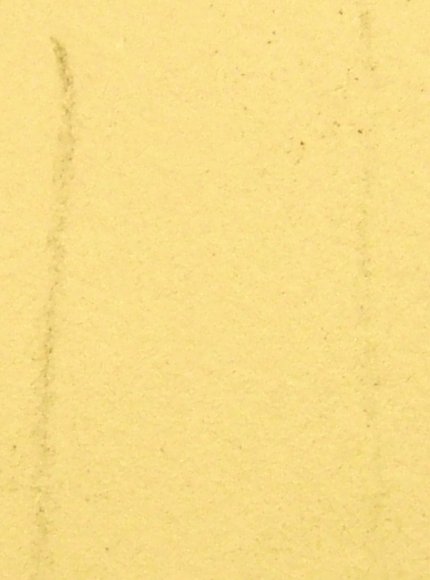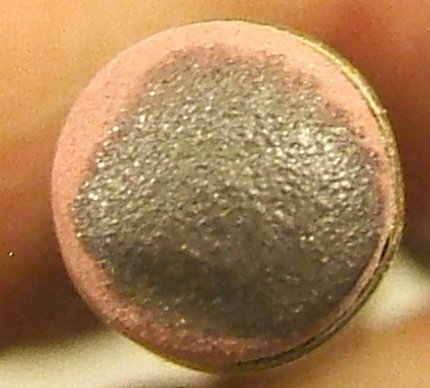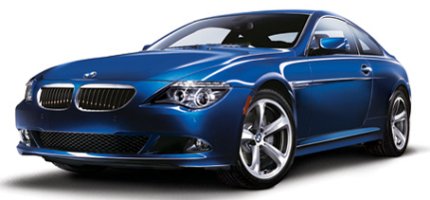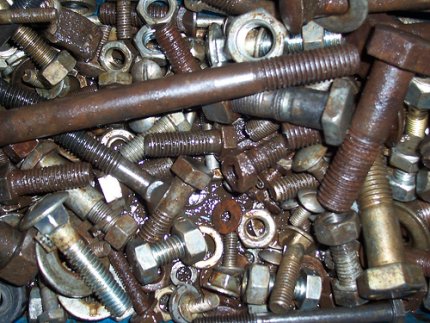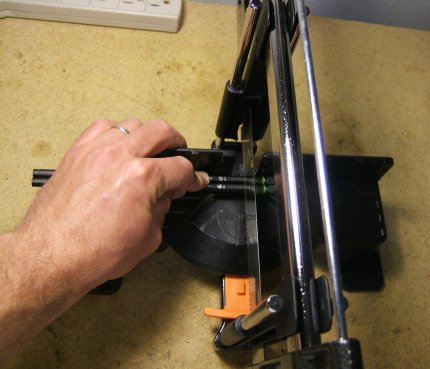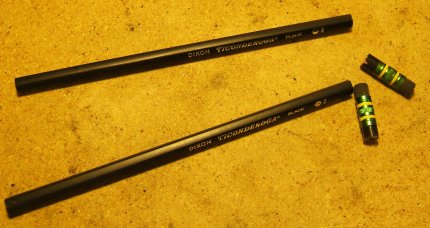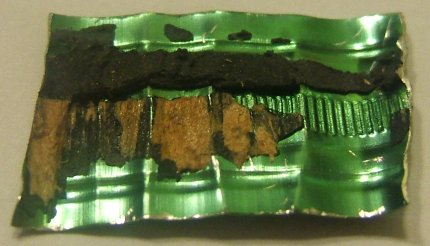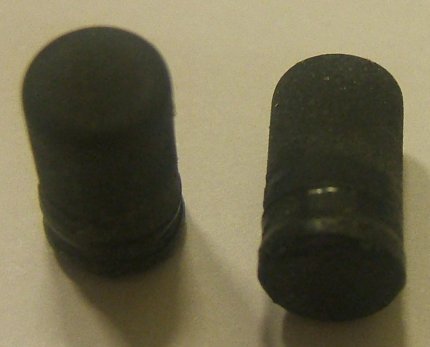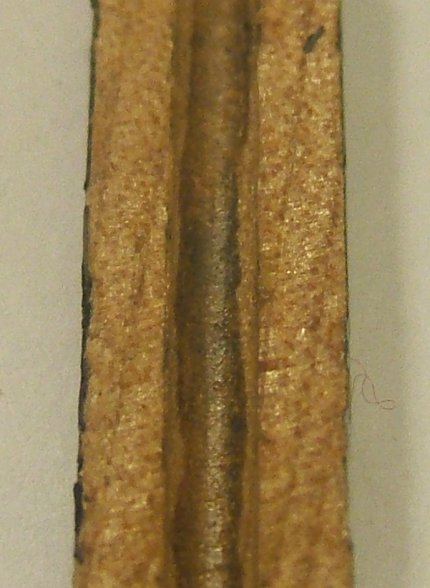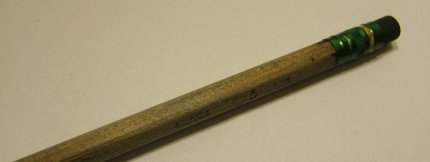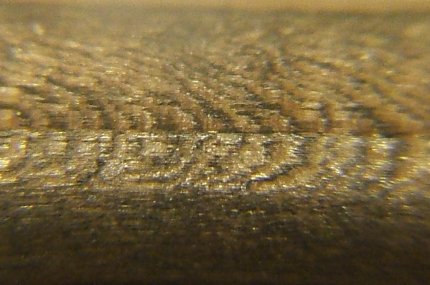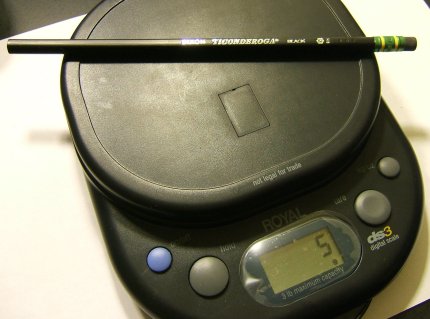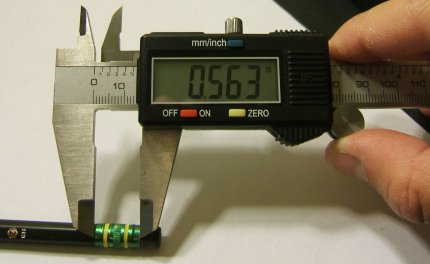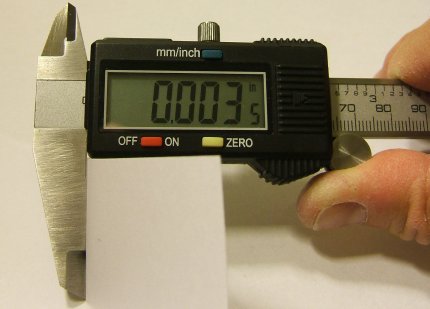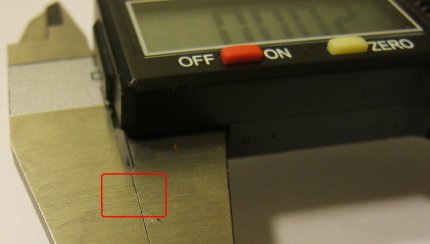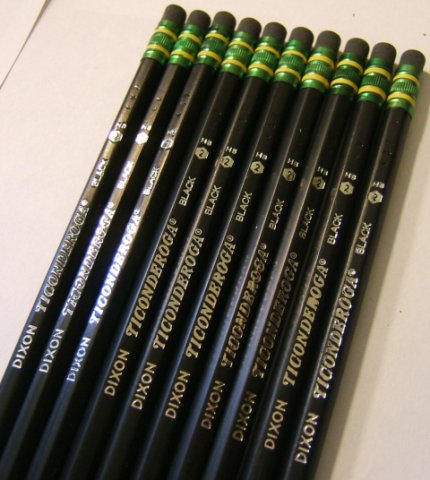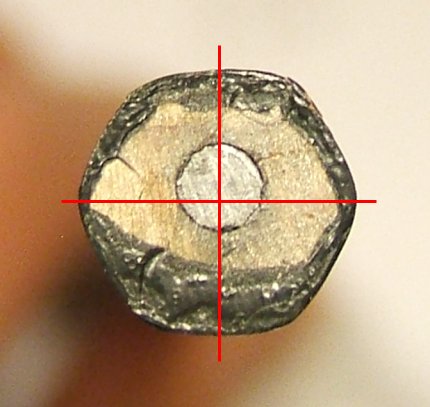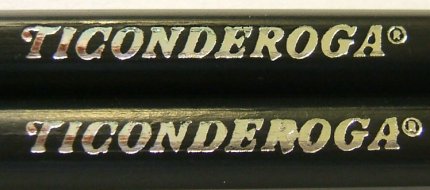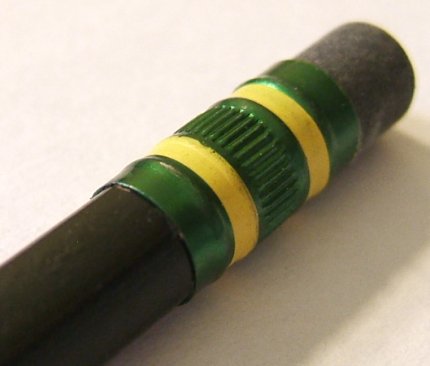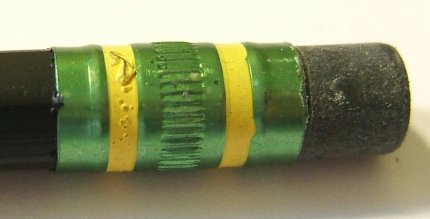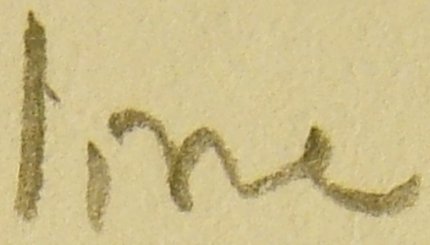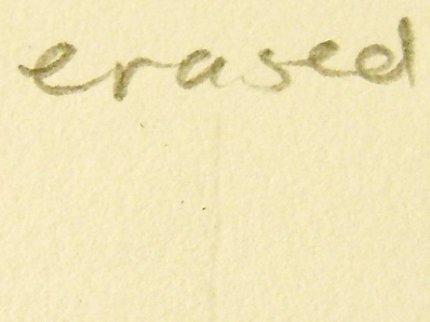It’s time to move on to another pencil. Let me introduce the Newell Rubbermaid Sanford Papermate Mirado Black Warrior. Goodness, that is a long name for a pencil isn’t it? This pencil, like the Dixon Ticonderoga, certainly carries a reputation behind it and not all of it seems positive. A lot of people say that once the brand and product was acquired and integrated into the Newell Rubbermaid conglomerate that the quality went down hard and fast. I’m still new to pencil collecting so I can’t say which way the quality went. I don’t know what the Mirado Black Warrior was like before but I sure am going to find out what it is now.
I got a pack of 10 Black Warriors during my business trip to Phoenix AZ back in February. The pencils have been lying around in their packaging while I have been test driving the Ticonderoga.
Like the Ticonderogas, they were purchased at the nearby Walmart. At $1.77 (excluding local taxes), they come out to a whopping $0.18 per pencil when rounded up to the nearest cent. That’s almost a nickel more per pencil than the Ticonderoga. So what do I get for a nickel more? At first glance I seem to get American manufacturing and pre-sharpened tips. Couple that with a cool sounding name like Black Warrior, and you would think that you have the equivalent of a ninja samurai for a pencil. You’re ready for any task as long as you have your Black Warrior handy.
Actually, for those who don’t know (and this was news to me), the Black Warrior was actually a Confederate schooner. I’m not exactly a boat enthusiast. Honestly, I prefer to keep my feet planted on something solid. Civil war buffs may get a kick out of owning something that relates to American history but civil rights activists may object to something that could in some manner (however thinly) be related to the oppression of people. Unfortunately, I don’t know more about how the pencil got it’s name but it would be interesting to know.
While the Ticonderoga is claimed to be the world’s best pencil, the Black Warrior say it is the world’s smoothest – and Newell Rubbermaid guarantees it.
If you think this is just a marketing slogan then read this text that is located on the back of packaging.
It’s a broad and bold claim to make and I wonder how many people actually disagree with them on the statement who then go ahead and file a claim to get their money back. You’d probably pay more in return postage than the cost of the pencils themselves.
Take out the ten pencils and line them up. Each has a very nice and smooth coat of lacquer in a matte finish. The casing is round so the pencils roll very easily. In fact, you wouldn’t believe how hard it was to line them up for the shot below.
I have to confess that I cheated a bit and put a pencil sharpener (not shown) in the bottom left hand corner to keep the pencils together. Only one pencil ended up being warped and only by a little bit.
Statistically speaking, this equates to a one in ten chance of having a warped pencil. In other words, 10% of Black Warriors around the world could be warped. Compare this to the one in twenty four chance of getting a warped Ticonderoga which would equate to an approximate 4.2% of all Ticonderogas being warped. That’s quite a jump. Obviously, for this statistic to have more meaning (and a better one) the sample size should be greater – like 100 or even more.
As mentioned earlier, each pencil is pre -sharpened so you should never see overflowing lacquer at the end like the Ticonderoga. You also won’t see if the leads are centered in the wood casing either. It is interesting to wonder what is cheaper: making a clean unsharpened pencil end or a sloppy unsharpened end and then sharpening it. Honestly, I can’t think that having the ends pre-sharpened is a deal maker or breaker for the consumer. I would think that many people who buy wooden pencils actually enjoy sharpening them. It enhances the ownership and builds a little attachment. Take a look at this detailed shot.
The ends are not sharpened by any sort of rotating blades. It looks like the pencils are fed through a hole with ever decreasing diameter. This process shaves away the wood to a decreasing point, exposing the lead, and shaving the lead to a decreasing point as well. All of the points end in a somewhat dull looking tip but this rather smart of Newell Rubbermaid. It helps keep the point in tact during shipment. Additionally, you can assured that none of the pencil material was wasted. Only the bare minimum amount of material was removed. Just look at those grooves!
The Black Warrior is only slightly shorter in overall length than the Ticonderoga. Specifically, it is 0.093″ shorter. Here is a shot of the end of both pencils when they are stood up side by side. I couldn’t effectively capture the whole length of pencil in the picture. That would be one long JPG!
The lacquer finish is even duller than what is found on the Ticonderoga and it feels a bit rougher. That is not to say it feels course as sand. On some pencils it is possible to see the seam running up the length of the casing. This seems to indicate that the finish is very thin. Other pencils had rough surfaces and the thin lacquer did not cover it at all. Perhaps the roughness came from the wood being cut poorly or perhaps it came from some impact after the lacquer dried. Either way, it was present and easy to see.
Continuing upward, we run into our first stamping and it boldly proclaims where the pencil was made.
One word: crunch! That looks like a painfully strong stamping. Unlike the Ticonderoga, this pencil is round so it cannot accommodate a head-on stamping unless the stamping is contoured. It should be a rolled stamping. Then again, maybe this a rolled stamping just done very poorly. Either way, it’s not very impressive and it looks ugly. Unfortunately, the other stampings aren’t any better.
We finally end our progression upward at the ferrule where more disappointment awaits us. If Dixon crimped their ferrules on a wet, freshly lacquered pencil then Newell Rubbermaid did the exact opposite. The ferrule must have been pressed onto the pencil after the lacquer had cured. Look at how the ferrule digs into the lacquer and gets underneath it. I wouldn’t think that a ferrule needs to double up as a burrowing squirrel.
It is interesting to note that the ferrule is in some ways very similar and very different to the Ticonderogas. A colored band appears in the center and there appears to be an all-around crimping if you could imagine the circumscribing grooves to come from a machine. However, the biggest different lies in the circular metal punchings above and below the band that also go around the pencil. There are six punches on each side of the red band to make a total of 12. None of the punches are equally spaced apart although they are consistently spaced between the top and bottom sets. If a set of two punches are too close together up above then you see the same down below.
The erasers seem shorter than what is found on the Ticonderogas and they are covered with some sort of white power. Perhaps this is talc. I don’t know. It does rub off easily onto your fingers.
Papermate’s website offers some detailed information on the Black Warrior but a lot of it seems like fluff. I can understand what it means for the casing to be made of incensed cedar, have a round shape, and contain ceramic waxed lead but what does “executive upscale styling” mean? So far I have seen nothing that would make me think this pencil graces the desks of CEOs and high level politicians. “Premium rubber eraser” can mean a lot of things too. I thought it was interesting that the Black Warrior shown on Papermate’s website does not match the appearance of the examples I bought at Walmart.
The sharpened end is nothing like the pre-sharpened end found on my Black Warriors. None of the stamping matches either. Where are the little hearts at the top of the pencil?
So how does it write? Well, I can’t exactly say that I am impressed. It does feel harder than the Ticonderoga and it also feels rougher. The perceived additional hardness is verified by the crumbling lead. Increased hardness almost always leads to something being more brittle.
The roughness likens itself to the experience of running the tip of a screwdriver across a piece of wood. There is a lot of friction here that was not felt when using the Ticonderoga. Perhaps you could say that the lead feels like it has sand in it or larger clumps of clay. The impressions on the paper are ever so slightly darker than the Ticonderoga but not by much. You have to stare at it for a while. Compare the Black Warrior impressions on the left to the Ticonderoga impressions on the right.
The Black Warrior sharpens well with the right sharpener. My Berol gives the pencil a good sharp tip and the wood has good adhesion to the lead. However, the Faber Castell results in a disaster. The tip crumbles and breaks. This is another sign of brittle lead. You can compare the sharpening of the Berol (right) to the Faber Castell (left).
The eraser is a disaster. Compared to the soft latex free eraser on the Ticonderoga, the rubber eraser on the Black Warrior feels like it was carved out of stone. It is very abrasive, sensitive to lead staining, and leaves a lot of residue behind. Even worse, the erasure is incomplete and sometime it can be smudged. I drew a line with the Black Warrior and Ticonderoga and then used each of the pencil’s erasers to remove the impression. Compare the performance of the Black Warrior eraser (left) to the Ticonderoga (right).
I darkened three areas and the areas were to receive a single pass, a double pass, and a multiple pass of the eraser respectively. The Black Warrior eraser simply could not work through that quantity of lead on the paper. It got saturated and the eraser turned black after one single pass.
After that, the eraser slid on all subsequent passes. The lead simply lubricated the eraser and I’m running oil on oil here. No erasing is possible until the eraser is cleaned. Here are the three darkened areas in my notebook.
Now I had to go back to the Ticonderoga and repeat the experiment. What a delight to see the Ticonderoga tackle the task with ease.
Again, I don’t know how any of these features and performance examples can lead anyone to think that this pencil has “upscale executive styling”. My initial impressions leads me to believe that this is poorly crafted pencil. Someone at the factory either doesn’t know or doesn’t care to make a good pencil. It’s as if someone tried to make something like this!
In my next post, I will try to dissect the Black Warrior and see what’s “inside”. Stay tuned!
